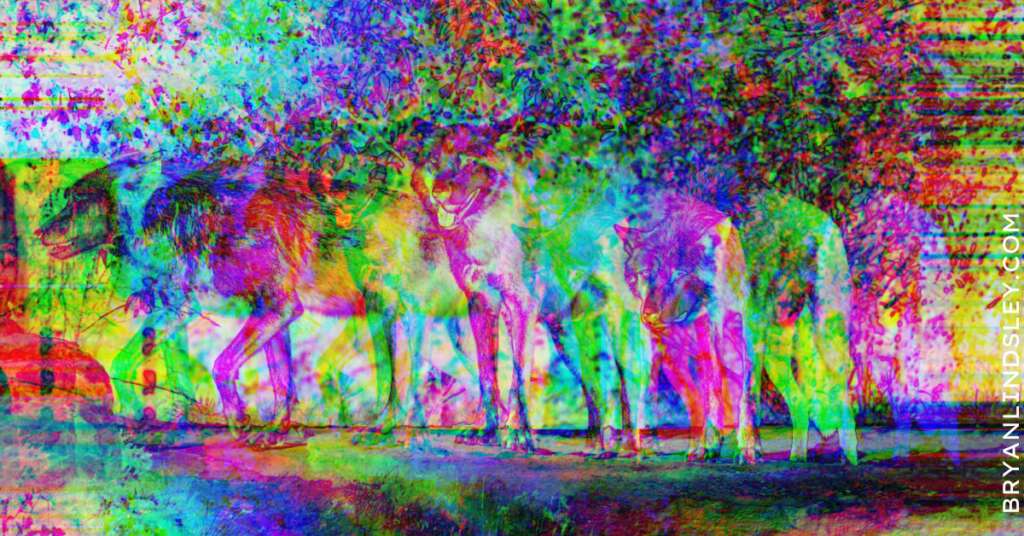Do you ever feel helpless in the face of seemingly intractable social problems like poverty?
I used to.
I’d try to be optimistic, but my actions never felt like they were enough.
So I would spend all my time brainstorming about how to go big, just like Ashoka founder Bill Drayton once counseled:
“Social entrepreneurs are not content just to give a fish or teach how to fish. They will not rest until they have revolutionized the fishing industry.”
Building off this visionary sentiment, I focused not on how to help individuals, but on how to transform entire systems.
Anything less seemed unimportant.
For every problem, I always asked,
“Where are the biggest levers and how can I pull them?”
But just imagine what happens when a newbie who has little experience with the complicated fishing industry – or any other complex system – tries to “revolutionize” it.
The changemaker feels like a battleship captain on the high seas directing a battle, but they’re more like a bull in a china shop.
When the battle is over, the changemaker goes on to the next crusade, leaving everyone else to pick up the broken pieces.
In today’s newsletter, I explore how the “change-the-whole-system” mindset fails, and then I offer an alternative.
A history of changing the whole system
When it comes to changing complex systems, history is littered with examples of top-down approaches gone awry.
China’s Great Leap Forward and Cultural Revolution are two such examples, with disastrous consequences for millions of people.
But from these tragedies, we can learn valuable lessons about the dangers of systems change visions.
Briefly, let’s jump back and see what lessons they teach us about effective and ethical systems change.
The Great Leap Forward (1958-1962)
The Chinese government’s attempt to modernize the country’s economy and industry through rapid industrialization and collectivization of agriculture led to massive food shortages and famine, resulting in the deaths of an estimated 15 to 55 million people. The negative consequences of this top-down, rushed approach to change teach us that:
- Comprehensive planning without feedback and input from stakeholders can lead to disastrous outcomes.
- Rushed, overambitious goals can lead to unintended consequences and human suffering.
- Leaders who are resistant to feedback and unwilling to acknowledge mistakes can perpetuate disastrous policies and outcomes.
The Cultural Revolution (1966-1976)
The Chinese government’s attempt to purge capitalist and traditional elements from Chinese society through violent political campaigns and public shaming led to widespread human rights abuses, social upheaval, and economic stagnation. The negative consequences of this top-down, ideologically driven approach to change teach us that:
- Ideological purity and loyalty can lead to authoritarianism, repression, and human rights abuses.
- Public shaming and violence as tools for change can lead to social upheaval, distrust, and violence.
- Change requires a balance between top-down leadership and bottom-up feedback and collaboration, and cannot be imposed through force or ideological purity.
Change the whole system by just playing your role
Given the risks and potential unintended consequences, do we have to give up on changing whole systems?
Well, yes and no.
I do think we have to give up a pre-determined vision of the future, as well imposing our will on what everyone else should be doing.
But, given the nature of how complex systems work, we know that individual actions – even those not intended to change the whole system – can have ripple effects that lead to system transformation.
Let’s take a lesson from the wolves of Yellowstone.
The ecosystem approach
In the mid-1990s, wolves were reintroduced to Yellowstone National Park after being absent for over 70 years.
Many worried these predators would further erode the park’s declining biodiversity.
But, something different happened.
The wolves hunted the overpopulated elk, which in turn allowed the vegetation to flourish.
This led to an increase in the number of beavers, aspen trees, and songbirds.
Even the rivers changed, as the beavers built dams that slowed down the water flow and created new habitats for fish and other aquatic animals.
The wolves didn’t try to change or improve Yellowstone’s ecosystem.
Nor did they do anything other than play their own role.
Yet, we can see the wolves as a powerful example of how playing one role really well can have a ripple effect throughout an entire system.
Focus on what you can do
Complex systems and related problems aren’t things that can be controlled.
Rather, they’re more like ecosystems to respect.
By focusing on our own actions, we can create ripple effects that allow systemic changes to emerge.
Cliche as it sounds, I think this is what Ghandi meant when he said:
“Be the change that you wish to see in the world.”
Our actions are interconnected with the actions of others, and as we make positive changes in how we work, we inspire others to do the same.
And that, when aggregated, changes the system.
So, let’s not get discouraged by the enormity of the challenges we face.
Instead, let’s take action and make a difference in our own spheres of influence.
Even a small change can have a big impact, and each of us has the power to contribute to a better world.
==
See you again next week.
Whenever you’re ready, there are two ways I can help you:
→ I’m a strategic advisor for the toughest societal problems like poverty, crime and homelessness. People come to me when they want to stop spinning their wheels and get transformative, systems-level change.
→ I’m a coach for emerging and executive leaders in the social and public sectors who want to make progress on their biggest goals and challenges.
Let’s find out how I can help you become transformational.



